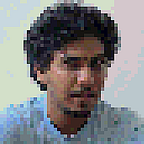Srishti Interim 2013
Srishti Citizen Space Agency
--
Srishti has a one month of interim semester between the two main semesters in the year. Various artists or design practitioners come over to Srishti to run a one month long experiment or project where students sign up. Being fascinated by space, I decided to take part in Srishti Citizens Space Agency. Joanna Griffin is leading this project. We were all clueless about what’s going to happen in this project, and I guess Joanna wasn’t ready to reveal that either. Things will unfold by the time, and hopefully, I will be able to contribute to the team in creating something amazing out of this project.
Week 1
I wasn’t aware of the objective of this project but still chose this because I assumed it will be good since space is something which always caught my attention. Joanna started the first day with asking few questions about space and its history with us and told us about many interesting facts about human exploration of space. After that, Joanna asked us to list out our duties as being the citizen of a nation. We listed out these functions on the paper and discussed everyone’s points. We were then given with newspaper, out of which we were asked to categorize news articles into nature, technology, and society.
After doing that, everyone read out what the news article is about and what category they think it can fall into. We were asked to justify why we believe that it should fall under that particular category and why not the other one. We were also given with a blank chart paper on which we were supposed to write the question that arrives from the news article. We chose the news article about people drowned in the river Ganges during the religious offering. This article does not involve any bit about technology, and hence we wrote the question as for how can we use technology to ensure the safety of the pilgrims who come to take a dip in the river Ganges. Later in this week we visited Vishweshwaraya Museum and we chose a conceptual direction which holds the potential to touch and enhance people’s lives through space technology.
Week 2
We started with researching about Telemedicine and VSAT network in India and sketched our concept — ATM+, to augment the existing network of telemedicine in India. On our second visit to Vishweshwara museum, the curator introduced us to the satellite based systems and how it is helping in Tele-education and Telemedicine in India which helped us understand the details of the telecommunication technology.
There are over 6,00,000 villages in India, while 80% of Indian villages have at least an electricity line, just 52.5% of rural households have access to electricity. And same is with the case of basic health amenities in the remote locations, they are sparsely located around the remote areas. Connecting remote areas with the internet seems to be a far-distant dream. However, the low-cost VSAT antennas guarantee to provide satellite based connectivity to remote places, and we intend to use this kind of network to realize ATM+ which we think has the potential to upgrade the current Telemedicine system in India. ATM+ aims to explore the shortcomings of the existing system of Telemedicine in India and projects to deliver round the clock Elementary medical services to the people of remote places in India where hospitals are not around, using the advanced satellite based network.
Week 3
We continued researching on the existing telemedicine networks and planned to develop a semi-working model of the prototype which we can hopefully exhibit at Vishweshwaraya Museum and to gather people’s opinion on this. Also, I would like to mention that the tools/methods which I learned during my last semester in user centered research are coming handy during the development of this project.
Later in the same week, we split into two groups — one focussing on the actual prototype and another on the exhibit aspects. The prototype further had two more aspects — the computer setup (that will connect to VSAT) and the kiosk/vending apparatus connected to the computer.
Week 4
In the final week, we started with making the computer setup that included a software program to connect doctor with the user over browser based video call. We built this with WebRTC over HTML5. For the demonstration and exhibit, we planned to run this over a LAN where one of us will enact the doctor from another room and the visitors can get the feel of actually visiting a ATM+.
ATM+ was one of the three projects of Sristi Citizen Space Agency in this interim semester. We were fortunate to get opportunity to exhibit our prototype in the museum and a lot of senior engineers and people appreciated our project.
ATM+ Team
Prakhar Ojha, Gaurav Singh, Swati Sharma, Sarvashree Jain, Pragya Sharma
